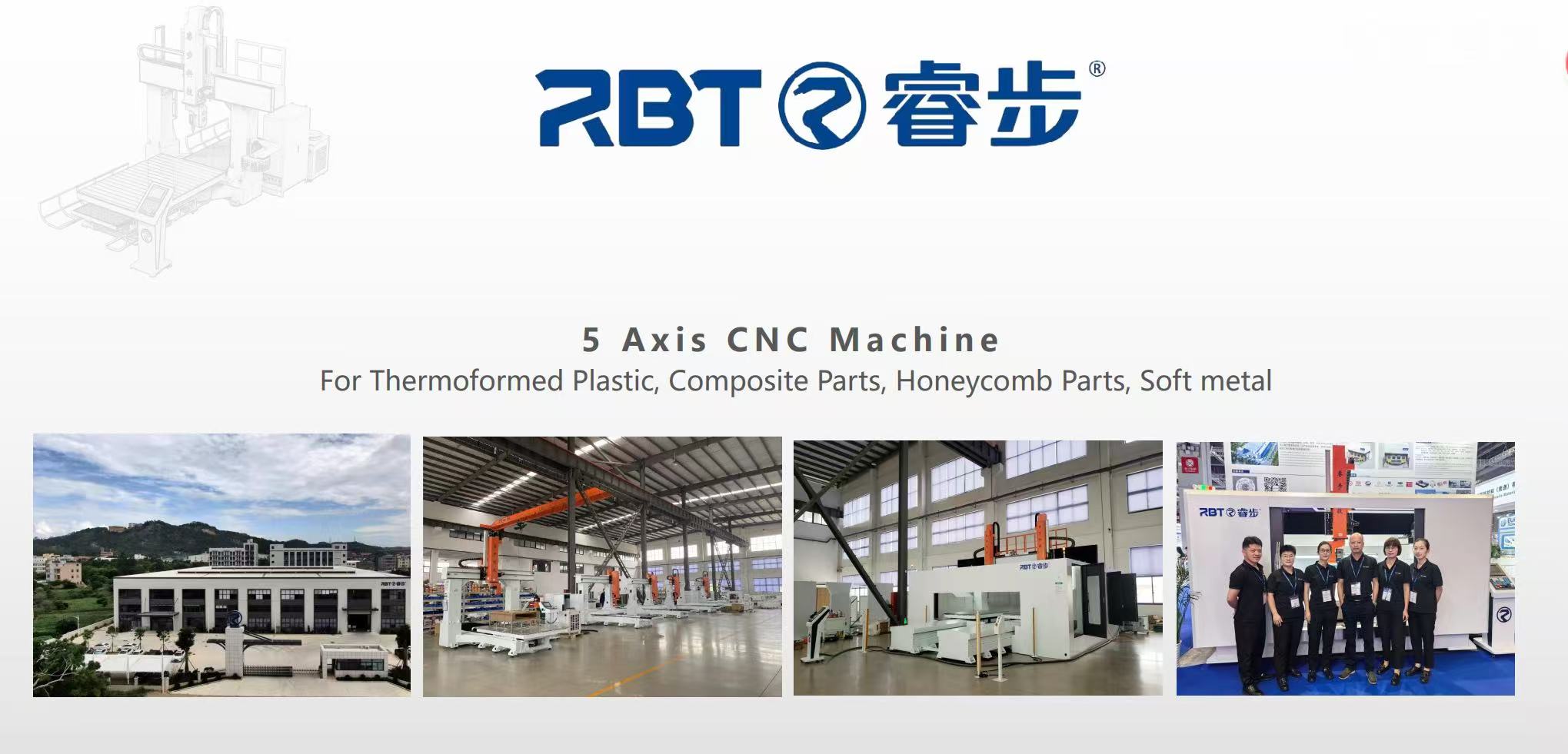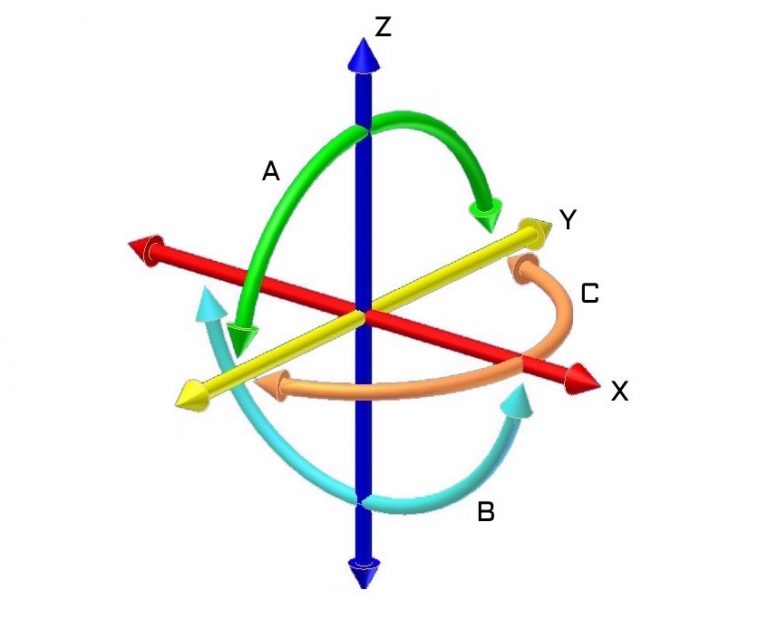Views: 0 Author: Site Editor Publish Time: 2025-03-15 Origin: Site








Ever wondered why it's called "5-axis"? The term may seem simple, but there's much more to it. 5-axis CNC machining is a game-changer in manufacturing, offering precision and efficiency like never before.
In this post, we’ll explore what 5-axis CNC machining is and why the term “5-axis” is used. You’ll learn how this technology shapes industries like aerospace, medical, and automotive, making complex parts with ease.

In 5-axis CNC machining, the term "5-axis" refers to the five directions in which a machine tool can move. These movements allow for high precision and the ability to work on complex geometries.
The five axes in 5-axis machining:
Three linear axes: X, Y, and Z.
Two rotary axes: A and B (or C).

X, Y, Z Axes
These are the standard linear movements in machining.
X-axis: Left to right.
Y-axis: Forward to backward.
Z-axis: Up and down.
A and B Axes
These are the rotary axes.
A-axis: Rotates around the X-axis.
B-axis: Rotates around the Y-axis.
Some machines use C-axis, which rotates around the Z-axis.
The combination of these five axes allows the cutting tool to reach nearly any part of the workpiece without repositioning.
Each axis plays a critical role in ensuring precision and efficiency.
In traditional 3-axis CNC machines, only the X, Y, and Z axes are used. The workpiece moves along these three axes. But in a 5-axis machine, these three axes still form the foundation. Together, they provide the basic movements to start machining.
The X, Y, and Z axes allow the tool to approach the part from different angles, but only in straight lines.
In a 5-axis machine, these three axes continue to control the linear motion. But now, the addition of the rotary axes (A and B) takes machining to the next level.
The A and B rotary axes allow the tool or workpiece to rotate, which enhances the machine’s flexibility. These additional movements enable complex shapes to be cut from multiple angles without manual repositioning.
A-axis rotates around the X-axis, allowing the part to tilt for more precise cuts.
B-axis rotates around the Y-axis, enabling even more angles for cutting.
For companies like RBT Intelligent Equipment, these five axes provide unmatched precision, allowing us to create complex, intricate parts efficiently, serving industries like aerospace, automotive, and medical.
By using these five axes, 5-axis CNC machines can create parts that would be difficult or impossible to produce with traditional methods.
5-axis machining significantly enhances precision and efficiency compared to 3-axis CNC machines. In traditional 3-axis machining, parts must be manually repositioned multiple times to complete cuts on various faces. This increases setup time and raises the risk of misalignment. With 5-axis machines, the part stays in place, allowing the tool to access multiple sides without needing to reset the workpiece. This reduction in repositioning not only improves precision but also results in smoother finishes and higher-quality products, as fewer tool movements lead to less vibration.
Industries that require complex geometries and intricate shapes, such as aerospace, automotive, and medical, greatly benefit from 5-axis machining. For example, in aerospace, turbine blades require precise cutting from various angles, which 5-axis machines can achieve. Similarly, the automotive industry uses 5-axis machining for manufacturing engine parts and chassis components, while the medical sector relies on it for producing implants and medical devices with high accuracy. 5-axis machining helps these industries produce complex parts faster, reducing waste and increasing overall efficiency.
Time-saving and increased productivity:
5-axis CNC machines cut down on time spent manually repositioning parts. Since the machine can work on multiple sides in one go, parts are finished faster, leading to higher productivity.
Precision and quality enhancement:
5-axis machining delivers higher accuracy, especially when it comes to complex geometries. This is crucial for industries requiring intricate parts, like aerospace and medical, where every detail counts.
Reduction of human error and labor-intensive tasks:
Automating the machining process reduces the likelihood of human error. Fewer manual adjustments mean fewer mistakes, making the process more reliable and efficient.
RBT Intelligent Equipment, specializing in advanced 5-axis CNC machines, helps industries optimize manufacturing processes, ensuring fast and precise results.
CNC machining began evolving in the mid-20th century when early machines, controlled by punched tapes, automated traditional manual machining processes. These machines initially focused on simple movements along the X, Y, and Z axes, handling basic linear motions. As industries like aerospace and automotive required more precision, the limitations of 3-axis systems became evident. To meet these demands, the fifth axis was added, enabling tools and workpieces to rotate in ways that 3-axis systems couldn’t, providing greater flexibility and improving precision for complex parts.
The addition of the rotary axis revolutionized manufacturing by allowing multiple sides of a workpiece to be accessed in a single setup. This improvement significantly benefited industries such as aerospace and medical device manufacturing, where intricate geometries and high precision are crucial.
The first 5-axis CNC machines emerged in the late 1970s, initially designed for specialized applications in aerospace. These machines integrated rotary A and B axes with the X, Y, and Z axes, enabling the production of parts with complex cuts that traditional methods couldn't achieve. The aerospace and defense industries played a major role in pushing the development of 5-axis technology, as they required parts like turbine blades and engine components, which demanded exceptional precision and flexibility.
In the 1990s, advancements in CAD (Computer-Aided Design) and CAM (Computer-Aided Manufacturing) software made programming 5-axis machines easier and more accessible. These innovations allowed industries beyond aerospace, including automotive, to adopt 5-axis machining. Companies like RBT Intelligent Equipment have further developed customizable 5-axis CNC machines, offering high-precision solutions for various sectors. The combination of advanced hardware and software has made 5-axis machining a standard in modern manufacturing, offering flexibility, precision, and efficiency at scale.

5-axis CNC machines are designed with different configurations to suit various manufacturing needs. The Table/Table configuration uses two rotating tables to hold and move the workpiece. This setup is ideal for large, heavy parts requiring precise rotations around the X, Y, or Z axes. The Head/Table configuration, on the other hand, has a stationary table, with the spindle head rotating to make precise cuts. This configuration is commonly used for larger parts in industries like aerospace and automotive. Finally, the Head/Head configuration features both the spindle head and the table capable of rotation, offering maximum flexibility and precision for complex machining tasks.
In a 5-axis CNC machine, all five axes (X, Y, Z, A, B) move simultaneously to create complex cuts with high precision. This simultaneous movement enables the tool and workpiece to adjust from different angles, reducing the need for multiple setups and ensuring smoother, more accurate cuts. The ability to move all five axes continuously makes 5-axis machining ideal for intricate designs. There’s also 3+2 positional machining, where only three axes move at a time, suitable for less complex parts and faster processing.
| Configuration | Description | Ideal Use Case |
|---|---|---|
| Table/Table | Two rotating tables hold the workpiece and perform rotations around X, Y, or Z axes. | Large, heavy parts requiring precise rotations. |
| Head/Table | Fixed table, with rotating spindle head for precise cuts. | Larger parts in aerospace and automotive industries. |
| Head/Head | Both spindle head and table rotate for maximum flexibility and precision. | Intricate and challenging machining projects. |
Do all 5-axis machines have five axes moving at once?
Not all 5-axis machines utilize all five axes simultaneously. Some machines, especially those designed for less intricate parts, only use 3+2 machining, where three linear axes move at once, and two rotary axes are locked in position.
3+2 machining is still incredibly useful for many applications, especially those that don’t require full 5-axis movement.
Is 5-axis machining only for complex shapes?
While 5-axis machining is ideal for complex shapes, it's not exclusively for them. In fact, it’s often used in everyday manufacturing to enhance precision and efficiency, even for simple parts.
Versatility: 5-axis machines can handle both simple and intricate designs, making them more flexible than 3-axis machines.
Is 5-axis machining expensive?
The cost of 5-axis machines can be higher than traditional CNC machines, but they often save money in the long run. By reducing the need for multiple setups and ensuring higher precision, these machines increase productivity and reduce labor costs.
Cost-efficiency: For industries like aerospace or automotive, where precision and time are crucial, the investment in 5-axis CNC machines pays off quickly.
5-axis CNC machining plays a pivotal role across several industries that require precision, complexity, and flexibility. In the aerospace industry, components like turbine blades, propellers, and engine parts demand exact angles and smooth finishes—tasks where 5-axis machines excel. In the medical field, 5-axis machines create implants, surgical tools, and dental devices, offering high precision and the ability to work with intricate details for customized solutions. The automotive industry relies on 5-axis machining for creating engine components, chassis, and suspension systems, all of which require complex shapes and tight tolerances for durability and safety. In energy and defense, sectors like turbines and military equipment benefit from the ability to produce durable, complex components that withstand demanding conditions.
5-axis CNC machining is the preferred choice for industries where accuracy and quality are critical. Whether creating turbine blades in aerospace, medical implants, or high-performance automotive parts, 5-axis technology ensures that complex geometries and tight tolerances are achieved consistently. This capability is crucial for sectors like aerospace and defense, where even the slightest error can lead to failure. 5-axis machines deliver high-quality results by allowing precise cuts from multiple angles and eliminating the need for multiple setups.
The term “5-axis” refers to a CNC machining process with five directions of movement. By using three linear and two rotary axes, it offers unmatched precision, efficiency, and versatility. This advanced technology is essential for industries like aerospace, automotive, and medical.Explore the potential of 5-axis machining to enhance your manufacturing processes. RBT Intelligent Equipment provides customized solutions to help businesses achieve higher precision and productivity.
A: 3-axis CNC machines move along X, Y, and Z axes, while 5-axis machines also include A and B rotary axes. This allows 5-axis machines to access more sides of a part in a single setup, improving precision and efficiency.
A: 5-axis machining reduces repositioning, leading to fewer alignment errors and smoother finishes. It ensures higher precision, which is essential for producing complex parts with tight tolerances.
A: Unlike traditional CNC machines, 5-axis machines use five axes to move both the tool and the workpiece simultaneously, allowing more intricate and precise cuts with fewer setups.
A: Industries like aerospace, automotive, medical, and defense benefit the most from 5-axis machining due to its ability to produce complex and highly precise parts.
A: Yes, 5-axis CNC machines are versatile and can handle both small, intricate parts and large, heavy components, making them ideal for a wide range of applications.